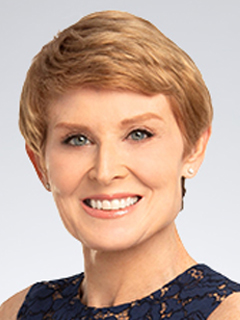Payrolls remain subdued
Government jobs are shifting sectors.

September 2, 2025
Payroll employment is expected to rise by 85,000 in August, in line with the monthly average in 2025. Public sector payrolls are expected to continue to shed jobs, with losses at the state and local levels adding to the ongoing attrition at the federal level.
Two factors to watch for are how rapidly Customs and Border Protection is able to get new recruits onto federal payrolls and how well hiring for public education holds up. Federal payrolls face a cliff in October when some 151,000 federal workers who took buyouts will fall off federal payrolls.
Private sector employment gains are expected to remain driven by one key sector: healthcare and social assistance. That sector is seeing a boost from aging demographics. However, we are starting to see a slowdown in hiring, notably in the care economy, which is disproportionately dependent upon immigrants.
The leisure and hospitality sector is not the job generator that it once was. High-income consumers continue to drive gains in discretionary spending, while middle- and low-income households are more discerning in where and when they spend. Low- and middle-income households noted larger concerns in August about the labor market and rising inflation.
Retail is expected to remain weak. The larger threat is for September as the elimination of the de minimis loophole kicked in at midnight on August 29. That threw a monkey wrench into small businesses' plans to expand in recent years while escaping tariffs on smaller valued shipments - under $800. The spillover to shipping companies is expected to be large.
Manufacturing activity likely lost ground again, with a pop in layoffs in Kentucky as some vehicle plants shut down later than usual for annual retooling. Construction likely remained subdued with home values in some of the most overbuilt markets softening. A modest drop in mortgage rates is expected to lend a lift to sales later in the year.
Average hourly earnings are expected to rise by 0.3%, which would cool the year-over-year pace of earnings to 3.7%. That would be the coolest gain since July 2024. Wages accelerated a bit late last summer, which makes for harder year-on-year comparisons. Average weekly hours worked are expected to hold at 34.3 hours, which is subdued and well off the post-pandemic peak of nearly 35 hours in May 2024.
The Federal Reserve will be watching average hourly and weekly earnings closely. Fed officials want to avoid a wage-price spiral, which would result in a more prolonged bout of inflation. Concerns about the labor market remain more to the downside, which has given the Fed a window to cut interest rates in September.
Separately, the unemployment rate is expected to hold close to the 4.2% pace of July, although there are upside risks. The duration of unemployment is expected to continue to lengthen, while the share of the labor force which has been unemployed for more than 27 weeks is expected to rise. The latter typically occurs after the economy has slipped into recession. Several states appear to already be flirting with recession.
The ranks of those unable to work due to vacations are expected to be muted. Those forced to accept part- instead of full-time employment are expected to continue to rise along with the U6 or stress measure of unemployment. That is a more inclusive measure of unemployment and could rise to 8.1% in August, its highest level since October 2021 and well above the 6.2% we saw pre-pandemic.
The unemployment rate among 16 to 24 year-olds is expected to hit 10.2% in August, its highest level since April 2021. The youth unemployment rate has risen nearly 4% over the last two years, which is more rapid than the rise in overall unemployment.
A slowdown in the demand and supply of workers has helped hold the overall unemployment rate near historic lows. The pace of hiring and quits remains more consistent with much higher levels of unemployment, a message not lost on Fed Chairman Jay Powell, who signaled it “may” be time for a cut in interest rates.
The Fed is becoming increasingly split about the course of policy. The September meeting could bring dissent from opposite directions. Governors Michelle Bowman and Christopher Waller could dissent in favor of an outsized one-half percent cut, while Kansas City Fed President Jeffrey Schmid could cast a dissent against any cut in rates.
Turning points in policy are messy. The level of uncertainty about the course of inflation and the labor market remains extremely high. Risks for both data points are to the upside.
Recent court rulings on tariffs add a new level of uncertainty as there is a possibility that the administration will have to refund tariffs it collected with interest. It is likely to leverage other tariff laws than the emergency powers that have come into question but that may not prevent the need for large reimbursements.
Risks for both data points (unemployment and inflation) are to the upside.

Diane Swonk
KPMG Chief Economist
Explore more

Public sector accounts for half of payroll gains
Private sector payrolls rose by a tepid 73,000.

KPMG Economics
A source for unbiased economic intelligence to help improve strategic decision-making.

Dog days of summer: Tariffs start to bite
How tariffs act on the economy.
Subscribe to insights from KPMG Economics
KPMG Economics distributes a wide selection of insight and analysis to help businesses make informed decisions.
Meet our team
